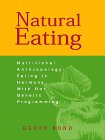Our digestive system can be thought of as a chemical processing plant. It has to break down into their useful component parts a variety of different 'feedstocks' each requiring a different process. The processes are often conflicting:
? an alkali environment / an acid environment
? a dose of enzyme A / a dose of enzyme B
? pre-treatment in the stomach / immediate treatment in the small intestine
Remarkably, our digestive system can perform these feats, but not simultaneously. A chemical engineer would say that each feedstock has to be treated on its own as a batch.
For example, a mixed hamper of washing might comprise greasy overalls and silk underwear. One knows to treat this load in batches because the processes required are conflicting. We know that the washing machine can satisfy all these requirements on condition that each type of wash is dealt with separately.
The foregoing consideration leads to the concept of eating food in batches, which require the same chemical and mechanical treatment in the digestive tract. It is known as the principle of proper food combining.
Today we have complicated and confounded the process by introducing new types of food into our diet. Notably starches, dairy products and fruits with a drastically distorted sugar profile.
Foodstuffs can be classified, as can laundry, into the categories which have to be considered independently. The latest understanding of the biological processes gives the following important results.
? Fruits should not be eaten in combination with any of the other categories, particularly protein. Fruits should be eaten on an empty stomach.
1st Reason: fruits are digested in the small intestine, and shouldn't get held up waiting in the stomach. If this happens, they will start to ferment, interfere with other digestive processes, and have their nutritive value compromised.
2nd Reason: fruits have a predominantly acid nature. Acid inhibits ptyalin production in the mouth, thus conflicting with starch requirements and inhibits gastric acid production in the stomach, thus conflicting with protein requirement.
? Protein/Starch combinations should be avoided.
1st Reason: the human digestive system is designed for the through-put of a high volume of low density, easily digestible foodstuff, chiefly plant food, i.e., fruit, salads and vegetables. Starches present a problem since their digestion starts in the mouth (with ptyalin). This digestion is stopped by the acid in the stomach, and then continued in the small intestine, under the action of enzymes like amylase secreted down the pancreatic duct by the pancreas.
Proteins, and particularly animal proteins, present another problem They undergo a prolonged churning and exposure to the acids and enzymes present in the stomach. It can be several hours before the stomach releases the resulting chyme into the small intestine. The digestion then continues in the small intestine under the action of enzymes like protease, again secreted down the pancreatic duct by the pancreas.
Unlike the chicken, which has three pancreatic ducts, the single human pancreatic duct is a bottleneck. A choice has to be made by the pancreas as to which enzyme to secrete first. If the starch/protein combination contained predominantly starch (90%), or predominantly protein (90%). then the choice is easy, and digestion can proceed as nature intended. If, perversely, the meal is an equal mix of starch and protein, then enzyme secretion by the pancreas is perturbed. The imperfectly digested remains travel with difficulty through the digestive tract. The highly sophisticated machinery of enzyme activity, hormonal feedback, and nutrient absorption is perturbed. The balance of the intestinal flora is disturbed. Bad bacteria multiply. Helpful bacteria are discouraged. The intestinal wall can become porous and, as described earlier, bacteria, funguses (such as candida) and undigested food particles travel through the bloodstream, creating mischief wherever they go. Dyspepsia, ulcerated colitis, liver disorders, demineralization, depression of the immune system, candidiasis, allergies, and general bad health can be the result.
The digestive system is designed to work chiefly on fruit and vegetation. Meat is more problematic. Starch is even more so. It simply is not a good idea to give it more than one problematic foodstuff at a time to digest. Here the problem is compounded by the two nutrients having conflicting treatment processes.
2nd Reason: proteins like starch also provoke the secretion of insulin. When starches are ingested at the same time, insulin secretion is multiplied. All the bad effects of hyperinsulinemia are therefore multiplied.
Worse, almost always, fat is present in large proportions with protein. This fat gets stored immediately and preferentially into the fat cells.
Finally, let's keep things in perspective. There are many times when small amounts of protein are included in a starch dish. Such is the case with traditional Asian cooking where there are little bits of chicken, nuts, or fish in the rice. Conversely there are occasions when there are small amounts of starch in a protein dish, like a few bits of sweetcorn in a tuna salad. This is unimportant provided either the starch or the protein dominates. The trouble arises when the proteins and starches are equally balanced and they fight each other for priority. This is the case with so much of what we eat today. For example, bacon and eggs with French fries, hot dogs, hamburgers or cheese sandwich.
* Salads and Vegetables do not require any special combining measures.
* Oils and Fats do not require any special combining measures.
Timing: Allow these minimum periods after the meal, if you are changing to another category with the next meal:
After Fruit. 15 minutes; after Starch, 1 hour: after Soft Protein (largely of vegetable origin), 2 hours; after Hard Protein (largely of animal origin), 3 hours.
Favorable Combinations
Fruits mix well with Fruits
Fruits mix tolerably well with Vegetables
Vegetables mix well with Proteins
Vegetables mix well with Starches
Poor Combinations
Starches mix badly with Fruit
Starches mix badly with Protein
Proteins mix badly with Starches
Proteins mix badly with Fruits
The Importance of Small and Frequent Meals ('Browsing')
The human anatomy is designed to work with frequent but small quantities of food. The functioning of the stomach, as it receives food and processes it, has been closely studied. One thing is clear. The stomach does not operate as a kind of simmering witches cauldron, where all that is ingested at a meal is all churned up together.
What actually happens is that the first mouthfuls slide down the stomach wall and settle at the far end, the antrum. Here, muscular churning takes place to thoroughly mix the food with the gastric juices.
The next batch also slides down the stomach wall, partly stays clinging to it, and settles on top of the first batch. This batch too gets good exposure to the gastric juices secreted by the stomach wall. As the first batch is evacuated toward the duodenum, the second is propelled by peristaltic action to take its place in the antrum and to be churned in its turn.
If you stop eating at this point, then digestion has proceeded as it is designed to do. However, for most of us that is not the end of the matter. We are by now only on to the main course. Maybe it is steak and french fries. These slide down into the stomach. Remember that the first and second batches have coated the stomach walls. This third batch settles in the middle. It is not in contact with the gastric juices. This is the opportunity for the animal meat to putrefy and the potato to ferment.
Many people then add insult to injury by eating fresh fruit desert. This sits on top of everything else you have eaten. The fruit quietly ferments provoking yet more gas and indigestion.
Here are major reasons why large meals are at the origin of bad digestion and bad health.
It is estimated that the ideal volume of a meal is no more than one and a half pints. This is the volume which just fills the stomach without stretching it. Increase the quantity to two pints and the stomach has to stretch but within acceptable limits. Most of us in the opulent West have been so used to overfilling our stomachs that they have become permanently stretched and out of shape.
The lesson is that we should eat little but often -- and always within the principles of Natural Eating!
 This article was excerpted from Natural Eating, by Geoff Bond. ?2000. Reprinted with permission from the publisher, Griffin Publishing Group, www.griffinpublishing.com
This article was excerpted from Natural Eating, by Geoff Bond. ?2000. Reprinted with permission from the publisher, Griffin Publishing Group, www.griffinpublishing.com
About The Authors
 Geoff Bond has degrees in pure and applied sciences from London University in the 1960?s. In the 70?s and 80?s Geoff spent many years living amongst peoples in remote parts of the third world. It was there that he deepened his understanding of human origins and Pleistocene eating patterns. This unique, 30 year course of independent study of "Nutritional Anthropology", has led to the development of the Natural Eating philosophy, based only on the most rigorous of scientific research. Visit his website at http://naturaleater.com/ or contact him at
Geoff Bond has degrees in pure and applied sciences from London University in the 1960?s. In the 70?s and 80?s Geoff spent many years living amongst peoples in remote parts of the third world. It was there that he deepened his understanding of human origins and Pleistocene eating patterns. This unique, 30 year course of independent study of "Nutritional Anthropology", has led to the development of the Natural Eating philosophy, based only on the most rigorous of scientific research. Visit his website at http://naturaleater.com/ or contact him at




























